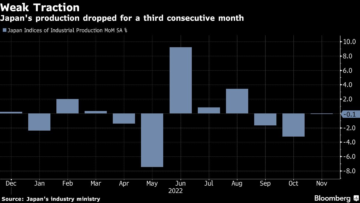
Selecting a supply chain planning and management technology provider is a complex process that can span months or years, and the relationship that develops may last a decade or more. A successful implementation starts with establishing effective executive governance and stakeholder alignment for the project. Here are five critical success factors that have proven their importance through years of supply chain implementations.
1. Dedicate resources to manage and actively guide the project.
Having a team of engagement managers to liaise between the project teams and the executive level, and who are focused on the project on a tactical, day-to-day basis, helps to ensure that the supply chain implementation project stays on track. By keeping in close touch with the executive team, the project leaders know what and how executives are thinking and what challenges the project team might be facing, and can anticipate and proactively mitigate any potential delays and other problems.
Delays can put projects at risk, and those delays often come about because of the heavy burdens placed on implementation teams. Having a separate resource dedicated to administering the project and the relationships between the vendor and the client’s executives helps to free up the time and attention of the implementation team.
The engagement managers understand executive priorities and their business challenges, and how these might impact the project. By conveying priorities to project teams, they are in a position to advise them about what needs to be done from an implementation standpoint in order to meet executive expectations and achieve the results the project is meant to achieve.
2. Document goals and KPIs together with executive and stakeholder teams.
Understanding the expected goals of an implementation is important to the relationship on both sides of the implementation equation. Focusing on a handful of key project measures that tie back to a company’s financial health, its operational performance, and/or human resources efficiency — such as streamlining processes by introducing automation, combining data for more effective decision-making, or repurposing human resources away from manual and administrative tasks — is one key to the success of supply chain solutions implementations.
Defining the desired outcomes of a project early on helps the teams focus on driving toward those key performance indicators (KPIs). It also helps in the alignment of executives and stakeholders by emphasizing enterprise rather than departmental or individual goals. Measuring KPIs allows stakeholders to understand company goals in project implementations and to continually strive for their achievement.
It’s also worth keeping in mind that goals and KPIs represent moving targets. The initial system implementation is only the beginning of a process of continuous improvement. That’s why it’s important to document and understand the goals for the project and what it is expected to deliver down the road. Look for an upcoming Logility, Inc.-sponsored five-step report on value measures and outcomes to gain a closer understanding of how to gather data and build KPIs.
3. Convene the executive steering committee to meet with vendors on a regular basis.
The process for selecting supply chain solutions partners requires establishing a successful long-term relationship. That’s why the executives who are funding the project need to be informed of project decisions and progress at each phase. That way, if the project team must deviate from the original direction or desires of the executive team, everyone stays on the same page.
Without regular oversight, the executive steering committee might not get involved until months after a project begins or only once a major problem surfaces. At that point, it may be too late to salvage an implementation and put the project at risk. The costs of reworking the project may be prohibitive, as will be the levels of frustration and fatigue foisted on the project team.
It’s important to have touchpoints between executives and project teams on a regular basis, and to avoid having the executive level become troubleshooters in supply chain solutions implementations. Having executive-level alignment in the project relationship helps drive relationship success and fosters a sense of partnership as the relationship evolves over the long term.
4. Keep the IT organization involved in project support.
As critical as it is to have the business buy-in to supply chain technology implementations, it’s also important to have a company’s IT team involved at the strategic level. The technology teams will play a key role in managing the technology and need to be comfortable using the tools that the system provides. Involving the IT organization at the outset establishes it as an immediate and key project stakeholder, in a position to provide crucial input for implementation requirements, such as insights into processes and data.
Successful technology implementations often have business analysts embedded within IT groups, so that the two together can manage the functional side of the implementation while driving toward the system’s ultimate business value. This synergy helps to generate quick turnarounds in company requirements, promote business as well as IT acceptance, and provide momentum to keep the project moving forward. Close engagement with IT groups is important for the company as a whole to feel comfortable with the implementation process, and, ultimately, in the use and management of the system.
5. Secure executive support for access to the right data.
Understanding the strategic importance of the availability of high-quality data is key to the successful implementation of supply chain solutions. Concerns over data and its availability should not be left to supply chain organizations, IT departments, or solutions users. Understanding the importance of data as a strategic asset at the executive level is crucial.
The performance of supply chain solutions depends on consistent data definitions across customers, products, items, and locations. When it comes to predictive analytics, for example, it’s necessary to enter data from across supply chains into the predictive models. That data must be available and consistent in order to achieve the desired results of understanding future customer behavior and making decisions based on hard data.
Without data that is comprehensive and well-maintained, it can’t be effectively used in planning, optimization, and analytical processes. This can negatively impact the organization’s coordination and collaboration with trading partners. When it comes to supply chain solutions implementations, the quest for data availability must be an enterprise priority, driven from the top down.
Logility, Inc.: Implementing Innovative Governance Structures to Assure Supply Chain Solution Implementation Success
Logility, Inc., a leader in supply chain planning solutions, through its Logility Digital Supply Chain Platform, leverages artificial intelligence and advanced analytics to provide end-to-end supply chain capabilities that automate planning, accelerate cycle times, increase precision, improve operating performance, break down business silos and deliver greater visibility.
When it comes to implementing its solutions, project governance and executive alignment, “it’s really critical to the overall success of any project,” says Josh Stephens, the company’s vice president for global services.
Even before a client engages Logility, the company deploys its Success Assurance Index which examines five key areas, one of which is executive alignment and governance. “That way,” explains Stephens, “we can see how their executive and project teams are interacting and make sure everyone on the same page.”
During selection processes, vendors like Logility will be engaged with key leaders at the client’s executive level. “But during implementation, much of the activity is turned over to the user community,” says Stephens, “and there can be a misalignment between the goals of users and the executive leadership.” Supply chain managers might be striving to create a more flexible user experience, for example, while executives might be focused on trying to improve inventory turns or forecast accuracy.
“The goals of the project need to be driven at the executive level and built into the implementation,” says Stephens. “That's a paradigm shift from how projects have traditionally been run in the past. Alignment helps us guide our client through the critical change management process and into the future state that they desire.”
Resource Link: https: www.logility.com
- SEO Powered Content & PR Distribution. Get Amplified Today.
- PlatoAiStream. Web3 Data Intelligence. Knowledge Amplified. Access Here.
- Minting the Future w Adryenn Ashley. Access Here.
- Buy and Sell Shares in PRE-IPO Companies with PREIPO®. Access Here.
- Source: https://www.supplychainbrain.com/articles/37253-five-governance-and-stakeholder-alignment-factors-to-ensure-supply-chain-solutions-implementation-success
- :is
- :not
- $UP
- a
- About
- accelerate
- acceptance
- access
- accuracy
- Achieve
- achievement
- across
- actively
- activity
- administrative
- advanced
- advise
- After
- allows
- also
- an
- Analysts
- Analytical
- analytics
- and
- anticipate
- any
- ARE
- areas
- artificial
- artificial intelligence
- AS
- asset
- assurance
- At
- attention
- automate
- Automation
- availability
- available
- avoid
- away
- back
- based
- basis
- BE
- because
- become
- been
- before
- Beginning
- between
- both
- Both Sides
- Break
- build
- built
- business
- by
- CAN
- capabilities
- chain
- chains
- challenges
- change
- client
- Close
- closer
- collaboration
- combining
- come
- comes
- comfortable
- committee
- community
- company
- Company’s
- complex
- comprehensive
- Concerns
- consistent
- continually
- continuous
- coordination
- Costs
- create
- critical
- crucial
- customer
- customer behavior
- Customers
- cycle
- data
- day-to-day
- decade
- Decision Making
- decisions
- dedicate
- dedicated
- delays
- deliver
- departments
- depends
- deploys
- desired
- develops
- digital
- direction
- document
- done
- down
- drive
- driven
- driving
- during
- each
- Early
- Effective
- effectively
- efficiency
- embedded
- emphasizing
- end-to-end
- engaged
- engagement
- engages
- ensure
- Enter
- Enterprise
- establishes
- establishing
- everyone
- evolves
- Examines
- example
- executive
- executives
- expectations
- expected
- experience
- Explains
- facing
- factors
- fatigue
- feel
- financial
- financial health
- flexible
- Focus
- focused
- focusing
- For
- Forecast
- Forward
- Free
- from
- frustration
- functional
- funding
- future
- Gain
- gather
- generate
- get
- Global
- Goals
- governance
- greater
- Group’s
- guide
- handful
- Hard
- Have
- having
- Health
- heavy
- helps
- here
- high-quality
- How
- How To
- HTTPS
- human
- Human Resources
- if
- immediate
- Impact
- implementation
- implementing
- importance
- important
- improve
- improvement
- in
- Inc.
- Increase
- index
- Indicators
- individual
- informed
- initial
- innovative
- input
- insights
- Intelligence
- interacting
- into
- introducing
- inventory
- involved
- involving
- IT
- items
- ITS
- jpg
- Keep
- keeping
- Key
- Key Areas
- Know
- Last
- Late
- leader
- leaders
- Leadership
- left
- Level
- levels
- leverages
- like
- LINK
- locations
- Long
- long-term
- Look
- major
- make
- Making
- manage
- management
- Managers
- managing
- manual
- May..
- meant
- measures
- measuring
- Meet
- might
- mind
- Mitigate
- models
- Momentum
- months
- more
- moving
- much
- must
- necessary
- Need
- needs
- negatively
- of
- often
- on
- once
- ONE
- only
- operating
- operational
- optimization
- or
- order
- organization
- organizations
- original
- Other
- our
- outcomes
- over
- overall
- Oversight
- page
- paradigm
- partners
- Partnership
- past
- performance
- phase
- planning
- platform
- plato
- Plato Data Intelligence
- PlatoData
- Play
- Point
- position
- potential
- Precision
- Predictive Analytics
- president
- priority
- Problem
- problems
- process
- processes
- Products
- Progress
- project
- projects
- promote
- proven
- provide
- provider
- provides
- put
- quest
- Quick
- rather
- really
- regular
- relationship
- Relationships
- report
- represent
- Requirements
- requires
- resource
- Resources
- Results
- right
- Risk
- road
- Role
- Run
- s
- same
- says
- secure
- see
- selecting
- selection
- sense
- separate
- Services
- shift
- should
- side
- Sides
- silos
- So
- solution
- Solutions
- span
- stakeholder
- stakeholders
- standpoint
- starts
- State
- Strategic
- streamlining
- strive
- success
- successful
- such
- supply
- supply chain
- Supply Chain Planning
- Supply chains
- support
- synergy
- system
- tactical
- targets
- tasks
- team
- teams
- Technology
- term
- than
- that
- The
- The Future
- their
- Them
- There.
- These
- they
- Thinking
- this
- those
- Through
- TIE
- time
- times
- to
- together
- too
- tools
- top
- touch
- toward
- track
- Trading
- traditionally
- turnarounds
- Turned
- turns
- two
- ultimate
- Ultimately
- understand
- understanding
- until
- upcoming
- us
- use
- used
- User
- User Experience
- users
- using
- value
- vendor
- vendors
- Vice President
- visibility
- Way..
- WELL
- What
- when
- which
- while
- WHO
- whole
- why
- will
- with
- within
- worth
- years
- zephyrnet












